|
Diseases of Poultry
By Ivan Dinev, DVM, PhD
|
AMYLOIDOSIS
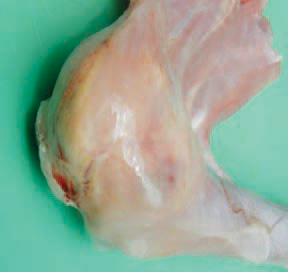
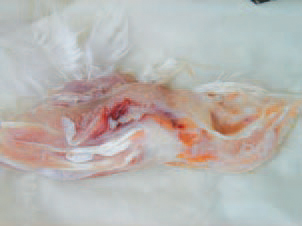
478.479.. Amyloidosis is seen mainly in adult birds. It is characterized by extracellular buildup of the protein amyloid in different viscera and the joints. Amyloid arthropathy. It is primarily associated with Enterococcus faecalis and Mycoplasma synoviae. Brown layers are particularly susceptible. Some genetic factors could be involved in the incidence of amyloidosis too. The affected joints are enlarged, swollen and contain orange-yellowish matter.
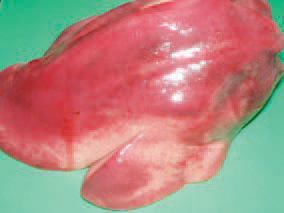
480.Amyloidosis of internal organs. The buildup is observed mainly in the liver, the spleen and the kidneys. The affected organ is multifold enlarged, with stretched capsule, rounded margins and pale colour. The state is usually seen following severe disturbances in protein metabolisms prolonged and exhausting diseases (tuberculosis etc.).
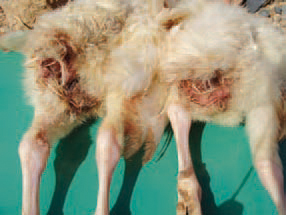
481.The cannibalism in birds is usually consequence of feather pecking or pulling out, or vent pecking, that are behavioural reactions. Feather pecking or pulling out are observed in birds, reared in closed, often overcrowded premises. This happens frequently in growing broiler breeder flocks during the period of restricted feeding.
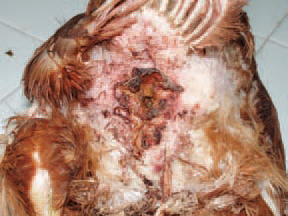
482.The vent pecking is usually taking place soon after the beginning of egg-laying and could be related to occurring hormonal alterations.
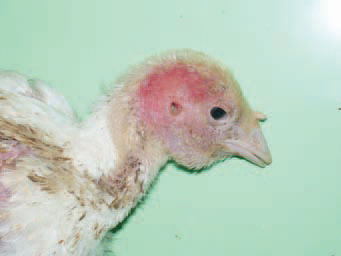
483pecking of the skin in various parts of the body and the vent result in blood loss, protrusion of viscera from body cavities and death. Some of the states that are supposed to provoke feather pecking are the high light intensity in the premise, pelleted feed, nutritional and mineral deficiencies and skin injury by ectoparasites.
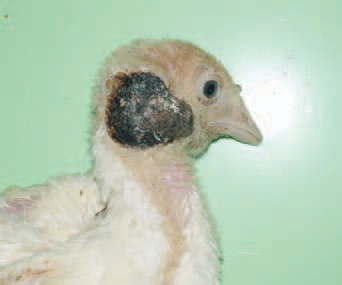
484. Formation of crusts after pecking in the head area in a turkey poult. The prevention of cannibalism could be done by providing adequate diets (ground feeds are preferred), reduced light intensity, avoiding overcrowding. An extreme measure is debeaking.
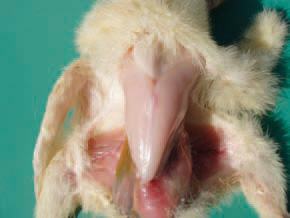
485Marked anaemic appearance of the carcass due to massive blood loss subsequent to cannibalism in a turkey poult.






